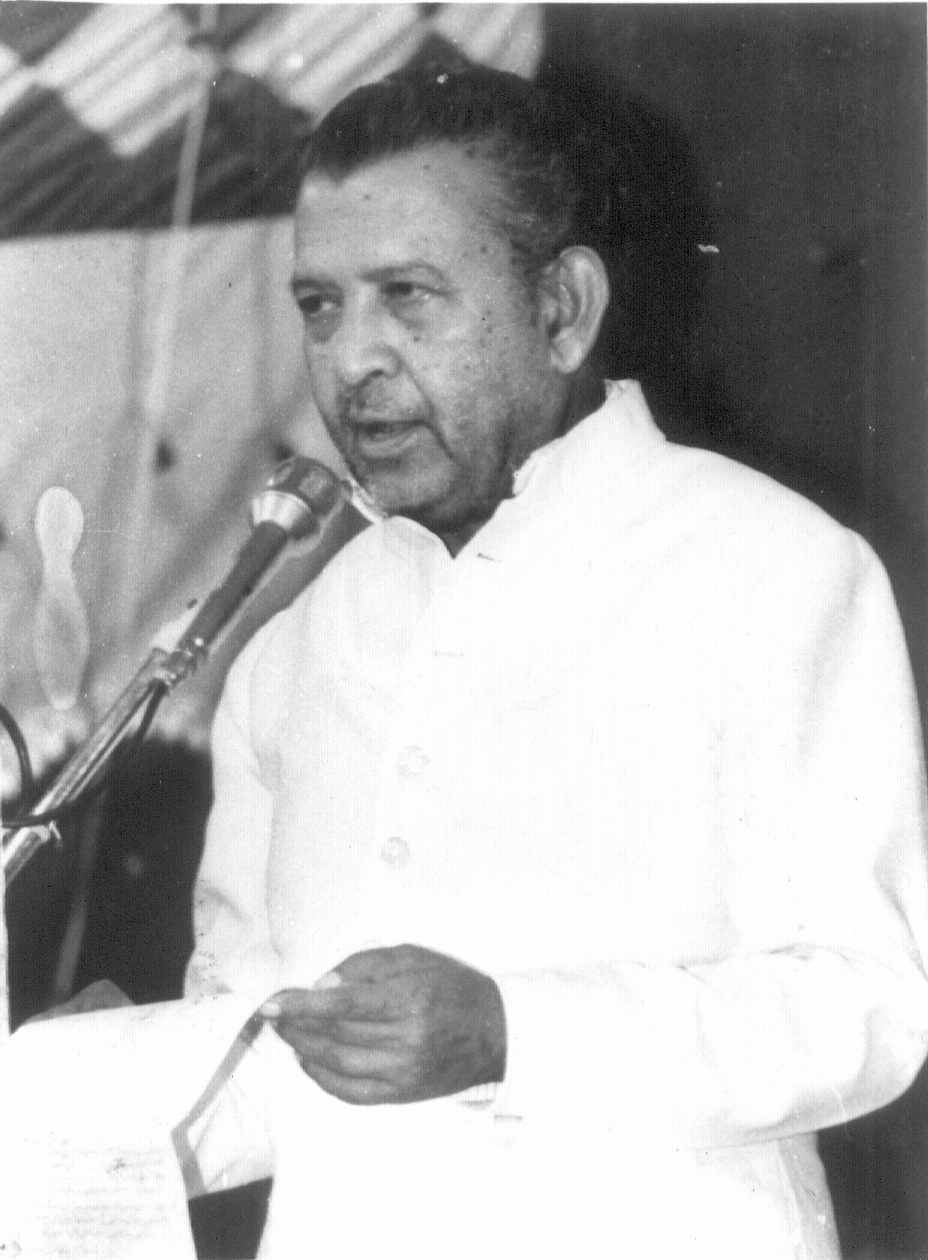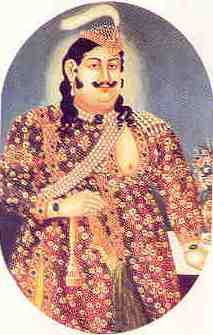|
HE LIVES in the mausoleum of the King of Oudh. He is Prince Anjum Quder, great grandson of Wajid Ali Shah. He has inherited the halo without the glow. Despite his letterhead which in one corner
announces his list of social concern: he is Chairman of King of Oudh's Trust, President of All India Shia Conference, Member Aligarh Muslim University Court,Member of Central Waqf Council and All India Muslim Personal Law Board, Working Committee Member All India Muslim Majlis-e- Mushawarat and Director of the Rotary Club in Garden Reach, a name euphemistically given to MatiaBurj, the industrial belt outside Calcutta. To meet him I brave an hour of traffic on a congested road with pot holes. The only address I have of him is the Imambara in MatiaBurj where the British had exiled Wajid Ali Shah in 1857. He was granted two garden houses and left free to move about pursuing his life and pleasures. Which the noble king did valiantly for 37 years.
Along a strip of land, two and a half miles that he bought along the river, he built 25 palaces. A great animal lover, he even had an open air zoo with rare animals, tigers, bears, snakes. Unlike in other zoos Wajid Ali Shah's snakes were free, living on an island with a moat around. What was then a place of 20,000 people has now a population of three lakhs among whom a lakh are Hindus, a lakh bengali-speaking Muslims and a lakh Urdu speaking Muslims, who continue to preserve the culture of Oudh and UP. They are descendants of the men who had traveled with Wajid Ali Shah, Driving up I see no signs of the river. Garden Reach is a long thoroughfare lined by slums, shops, factories, chaos. The first place is now a mausoleum; the garden houses are headquarters of the Bengal Nagpur Railway. At the site of the king's palace now stands the bleak warehouse building of MacGreave Cotton. A stillness hangs over the mausoleum where rests the sandalwood tazia of the devout ruler. A few lakh Shias visit it every year during Mohurrum. During the year, women are given grants to do Koran Qani children gather every morning to chant verses from the
Koran and an old man strikes a gong every hour, a tradition going back a hundred years. Frail signs of life in a place that holds a major key to history!
There is a desolation about the mausoleum that one associates with monuments that have died. Except for the presence of Prince Anjum Quder whom I find in a room above a cold stone stairway. The casualness of his clothes does not negate the distinction of his presence. He still bears the looks of his ancestors whose portraits are found in an austere cold room above the other stairway. Sadat Khan who reigned in 1722 to Wajid Ali Shah who ruled till 1856.
He neither has the look nor the mannerisms of an ordinary mortal. He has large aristocratic eyes and a squarish, stockey face. His genealogy rings with truths of history, tradition and a distinct civilization. He presides over the monument where lie buried his great grandfather. His father was Birjis Qadr who became king for a year after Wajid Ali Shah was sent away and his wife Begum Hazrat Mahal chose to stay on and keep the fight with the British alive. "She fought many battles with the British," says Anjum Quder glowing with pride at the thought of the grand old lady. "She was queen-regent for a year as her son was a minor".
His rulership is acknowledged by all nationalist historians but not the British. If they accept his rulership they also accept his defeat. She went on fighting,
|
winning and retreating until the last battle in Gonda where she had collected a lakh of soldiers from all over India. She lost that battle. Many died. Those who survived spread all over India. She migrated with her son to Nepal where she lived from 1860 to 1879.
She died in 1879 leaving behind a place on a hill top in Kathmandu, a mosque that is known as the Hindustani masjid and in its compound an imambara where she lies buried. Her death centenary was celebrated in 1979 all over India.
Prince Anjum's grandfather Birjis Qadr returned to Matiaburj in 1893, six years after the death of Wajid Ali Shah. What followed was according to Prince a gory and violent reality. Birjis Qadr was poisoned by his step brother along with six of his children at a dinner party. His father, Meher Quder who was still in his mother's womb was saved, taken away to live in the house that his grandmother had left behind in Calcutta where he lived quietly and had three sons, one among them being Prince Anjum. The other two were Kaukab Quder, a reader in Aligarh University and Nayyer Quder, a solicitor in London.
"We have all gone in for law", says Prince Anjum. He speaks English well, is articulate and has a natural grace. Behind him in the window is an old twisted tree, a benign presence. Others around him are old retainers, 20 of them, shabbily dressed in lungis and kurtas. History has decayed in the Imambara physically but not spiritually. They continue to serve a prince shorn of all glory. And yet they are getting ready to host reception for his brother from London who came back home to Matiaburj. Prince Anjum invites me to join the celebration, making it a point to stress that it will be graced by a minister and MP of the West Bengal government. A desire to be part of the mainstream is evident. He is not a mere prince languishing in a monument. A commemorative plaque that hangs on one wall of the Imambara confirms it.
"Struggle of Oudh Dynasty started
by King Birjis Qadr in 1857,
Hampered by his assassination in 1893
was refurbished by his grandson
Prince Anjum Quder in 1974.
Unveiled by Sir John Thomson in 1982 with the words :
"a historic reconciliation in a
spirit of mutual generosity."
 |
 |
Prince Anjum invites me to visit the family in the old house on Marsden Street in Calcutta, a large Bungalow raised by a queen, now hidden behind the melee of a basti. I have trouble finding its entrance, until a passerby points to a shop through which one enters, going up dark steps, into a home where I find a large divan covered with a sheet and a group of ladies glowing with courtesy. They are his three nieces who take me into a small bedroom ceremoniously where we sit on beds and talk. "If royalty means blue blood then we don't have it", they say almost in a refrain. "The association though is a source of inspiration to us. We want to live like modern people not as rulers." One of them is a lawyer, yet another plans to join the IAS and the third propagates the greatness of Islam as the wife of an enlightened maulvi. They are the daughters of Kaukab Quder. Prince Anjum's eldest son, he claims proudly is a snooker champion, number one in Bengal and two in India. The Prince too is a sportsman. I run
into him at the Calcutta races. He advises me to bet on the horse called Dancing Trapeze. A beginner in this game I follow his advice. The horse wins !
|

